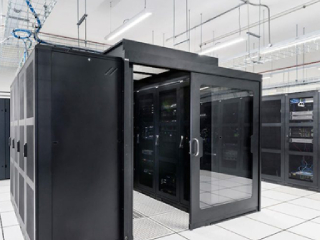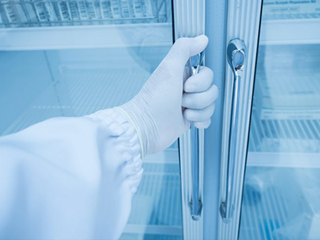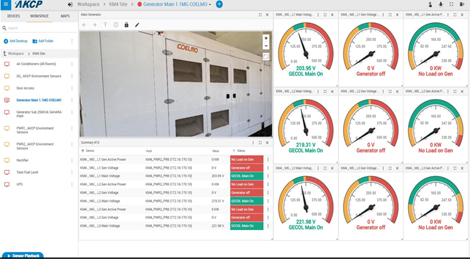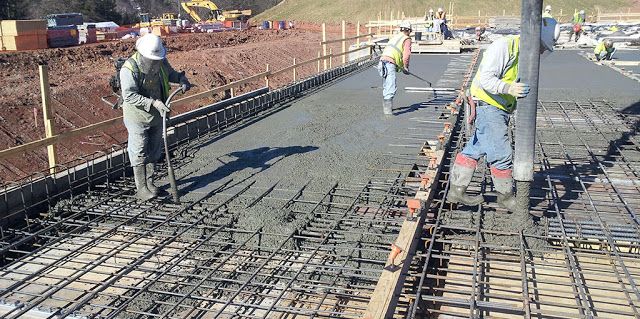
Photo Credit: www.pinterest.ph
The temperature during construction has a strong influence on the long-term stability of a structure. Monitoring sensors are necessary to verify the concrete mix temperature, differential temperature, and temperature consistency during the curing process. The temperature sensor is the primary device used in monitoring. Wireless sensors offer easier access to data, especially when pouring during extreme weather conditions. By using wireless temperature sensors, data will be available 24/7 on the site engineers mobile phone, laptop or tablet. Contractors can have insight into the curing concrete and take necessary actions which guarantees a strong, durable, and quality structure more conveniently.
The possibility of future damages in the mass concrete may increase if the temperature goes beyond the optimal condition. More often than not, temperature peaks at 48 hours and continue for a week. Higher temperature is more likely to generate with bigger concrete structures. This makes them more prone to damages. Aside from these, contractors should also consider the extreme weather condition that influences temperature.
Temperature Differential
The difference between the hotter and the cooler part of the slab is the temperature differential. It is usually the inner core and surface of the concrete. The temperature differential between these two should not be greater than 35◦F (10◦). The high-temperature differential can cause tensile stress on the concrete. When the stress is greater than the strength of the concrete, severe cracking will occur. Thermal cracks increase permeability. This also increases the possibility of air and water penetration. Such a problem results in a weak structure.
Temperature sensors will help the contractors measure the temperature of the element’s inner core and surface. It will send a notification when the temperature differential reached its threshold. This further compromises damages affecting the durability of the structure.
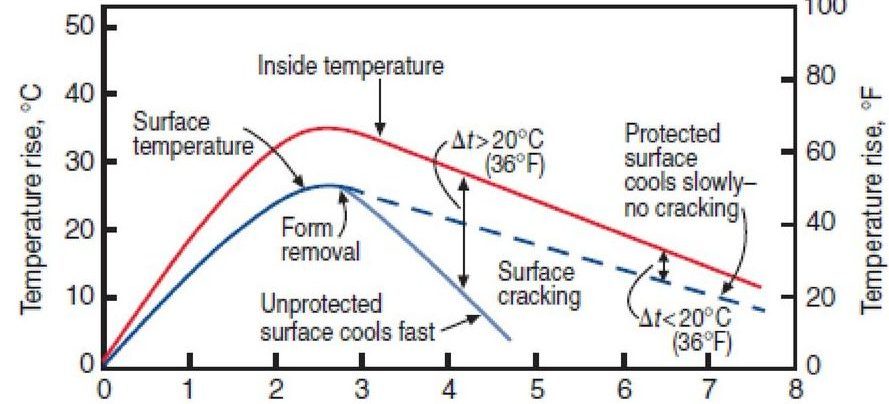
Photo credit: slideplayer.com
The Influence of Weather
Weather influence the strength of the concrete structure. It can increase the construction cost as well. High price includes the materials and equipment used to stabilize temperature conditions. Manpower also contributes to this cost. Most importantly, it requires stricter monitoring.
-
Hot Weather
During hot weather, the thermal condition needs constant monitoring. Hot weather creates problems in mixing, placing, and curing concrete. These problems can adversely affect the quality of the structure. The concrete hardens faster with high temperature, requiring more water. If the ratio of water and cement cannot be maintained by trying to add more cement, it will compromise the strength. Higher water content also means greater drying shrinkage. Laboratory research reveals that the detrimental impact of hot weather is directly proportional to the amount of re-tempering water added. This is also proven on-field experiences. To maintain the ideal temperature, contractors usually add ice. For instance, if 75 lb. of ice cubic yard is used on a concrete mix, a temperature of 90 F will lower to 75 F.
-
Cold Weather
Precautions should be implemented when concreting in cold weather. According to the IOWA Standards and Specifications, contractors must follow the cold weather concreting procedure. This is when the temperature drops to 40°F. Concreting procedure during cold weather increases the workload, affecting manpower management. Before placing the concrete, all snowflakes should be removed from the formwork. It is also necessary to increase the surfaces’ temperature that will be in contact with the concrete. Heating materials are also used during cold weather. Heated aggregate and water will be used to steam and maintain the acceptable batching temperature. The temperature of mixing water and aggregate depends on how cold the weather is. Heat must be controlled as overheating may accelerate chemical action.
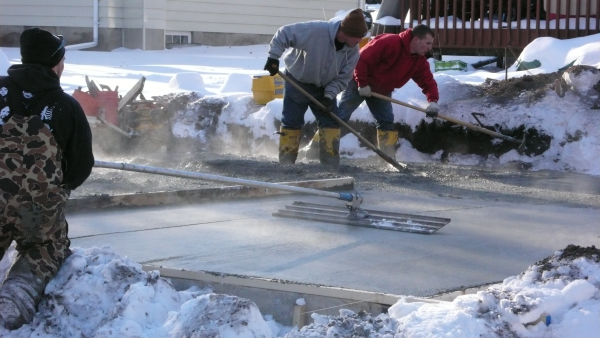
Photo Credit: trpreadymix.com
With the use of temperature sensors, contractors can make more informed decision-making in the concrete curing process. With the data provided by the sensors, they will be aware of what precautions and when they should be taken to counter the extreme heat or cold.
Temperature Monitoring Using Wired Sensors

AKCP Thermocouple Sensor
The most common approach in monitoring concrete temperature is through wired sensors. These are also called thermocouples. The end of the sensor is installed within the formwork before pouring the concrete. It will then be wired outside the formwork. To record the temperature at a specific period, the sensor is connected to the data logger, depending on the type of system. Another approach of the wired system is through the use of a transmitter. It is placed outside the concrete in the form of a box that is attached to the temperature sensors. It automatically monitors and records the temperature. The transmitter will then upload this data to the cloud. This allows the condition to be measured and analyzed by the workers. For this approach, data analysis is done manually, therefore requiring more time and workforce.
The use of wired sensors that requires physical connection and implantation to the concrete can be a drawback to this process. It increases the time and labor cost, but it is also prone to damage as it is placed on a construction site. Some of these risks include:
- The cable can be accidentally cut on a job site while construction workers are cleaning.
- Humidity exposure can damage the data logger.
- Incorrect assembly can cause wires to cross over on the plug resulting in an inaccurate reading.
- Hassle on identifying and labeling them.
The Benefit of Switching Wireless
To ease with risks of wired sensors, wireless sensors are introduced to the concrete industry. And it now starts dominating the market. According to fortune business insights, the market of wireless sensors will reach $31.298 million by 2027. Several factors attracted the industries to invest in wireless systems.
The reduced work and convenience is the primary reason why industries decided switching wireless. With such a system, there is no need to go with the trouble of recording it manually. The data can be accessed on your mobile phone or tablet application wirelessly. This application will be the one who will do the calculation of the concrete strength. Some require distance allowable to gain access, while others can give you comfort while accessing it at home or anywhere at any time.
Another reason is cost-effectiveness. There is no need to attach a costly data logger to the temperature sensors to download data with wireless sensors. A reduced workforce will also save you up on your manpower expenses. Did you know that 40-60% of the construction cost goes to manpower?
Furthermore, a wireless sensor can also increase the efficiency required for fast-paced construction projects. Data is shareable via email to other people of concern for easier coordination and faster decision-making.
With wireless sensor monitoring, the device is placed on the formwork. Temperature wires will be extended to the appropriate areas with the concrete form. After pouring the mixture, the wires will be completely covered and hidden. This makes them safe from being cut accidentally as they are less exposed to the outside environment.
AKCP Wireless Temperature Sensors
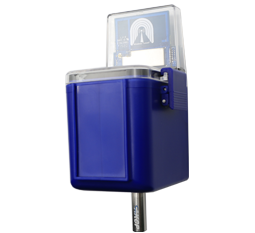
Wireless Temperature Sensor
Measuring the temperature during the concrete curing process is important for a quality structure. As they say, “what gets measured gets managed”. With wireless sensors, the temperature is stabilized with the best condition without the work of cabling. Not only it brings ease to the workers, but it also reduces cost, time and delivers accurate data.
AKCP offers wireless temperature sensors with a built-in calibration check. Wireless Tunnel™ NIST2 sensors feature 2x NIST traceable, calibrated temperature sensors in a single stainless steel tube.
These wireless sensors also feature:
- x AA Battery powered, with 10 -years life
- USB 5VDC external power.
- 12VDC external power.
- Custom sensor cable length up to 15ft to position sensor in an optimal location.
- NIST2 dual-sensor calibration integrity check.
- NIST3 triple sensor calibration integrity checks with failover.
Reference Links:
https://www.fortunebusinessinsights.com/wireless-temperature-sensor-market-103520
https://www.giatecscientific.com/education/monitoring-concrete-temperature-with-wireless-sensors/
https://www.giatecscientific.com/education/wired-vs-wireless-temperature-sensors/
https://www.nrcs.usda.gov/Internet/FSE_DOCUMENTS/nrcs142p2_011443.pdf

